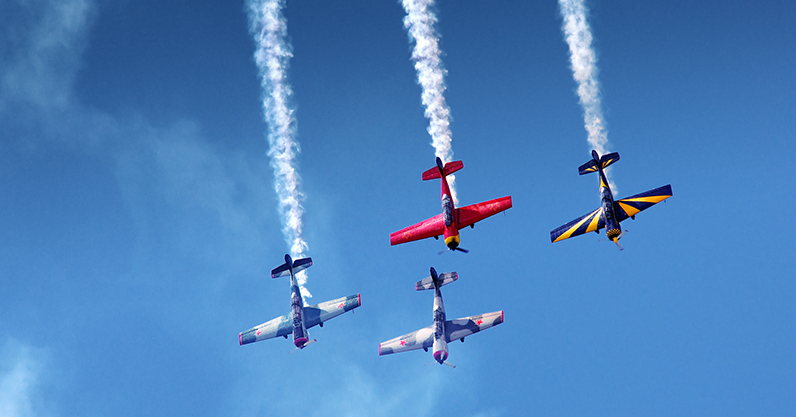Thousands of pilots and aviation enthusiasts gathered in Oshkosh, Wisconsin, to witness the spectacle of high-flying acrobatics and cutting-edge aircraft technology. Before the air show began, pilots and air traffic controllers geared up to provide a seamless and safe experience for all attendees.
If you’re not aware, the number of pilots who fly into Oshkosh during the air show is mind-blowing. According to statistics from previous years’ events, Oshkosh sees an influx of around 10,000 aircraft during the week-long air show. This includes a wide variety of airplanes, from small recreational planes, vintage warbirds, and military aircraft to larger commercial jets. This high volume of traffic highlights the importance of effective air traffic control during the event.
During the Oshkosh Air Show, air traffic control operates with unique procedures to manage the significant increase in air traffic. The Federal Aviation Administration (FAA) establishes temporary procedures for the event, including the creation of temporary control towers and the implementation of special arrival and departure routes. These measures are intended to ensure safety and efficiency for the large number of aircraft operating in the vicinity.
In order to ensure a smooth flow of arrivals and departures, pilots can take several steps to better understand their approach to the airport. It is crucial for pilots to review all the published procedures, NOTAMs (Notice to Airmen), and any other relevant information provided by the organizing committee. Familiarizing oneself with the airfield layout, including visual checkpoints and non-standard taxi routes, can also prove helpful. Additionally, attending pilot briefings and workshops organized by the air show can provide invaluable insights into the specific operational challenges pilots may encounter.
When flying into Oshkosh, certain pilot proficiencies are particularly advantageous. Strong knowledge of, and adherence to, proper communication protocols and radio phraseology are vital for maintaining a safe operating environment. Prompt transmission of accurate information and prompt comprehension of that information facilitate efficient flight operations and help mitigate potential hazards. Pilots should be able to articulate their intentions clearly, seek clarification when necessary, and actively listen to ensure clear understanding.
With thousands of pilots expected to attend each year, one of the fundamental skills that pilots should constantly strive to improve is their airmanship. Airmanship includes various attributes, such as judgment, discipline, and situational awareness.
- Good judgment entails making wise decisions based on thorough evaluation of risks, weather conditions, and aircraft limitations.
- Discipline ensures adherence to standard operating procedures, checklists, and regulations, which creates a safe and predictable environment for aviation operations.
- Pilots should have situational awareness and be comfortable flying in close proximity to other aircraft, as the density of traffic at Oshkosh can demand skillful maneuvering.
If you’re thinking of attending Oshkosh Air Show 2024, give us a call. We can help educate you on all the necessary procedures and protocols that are required to ensure a safe and enjoyable experience. And if you just want to work on your proficiency, we can help with that too!
Andrew F. Henley
President, American Flyers










